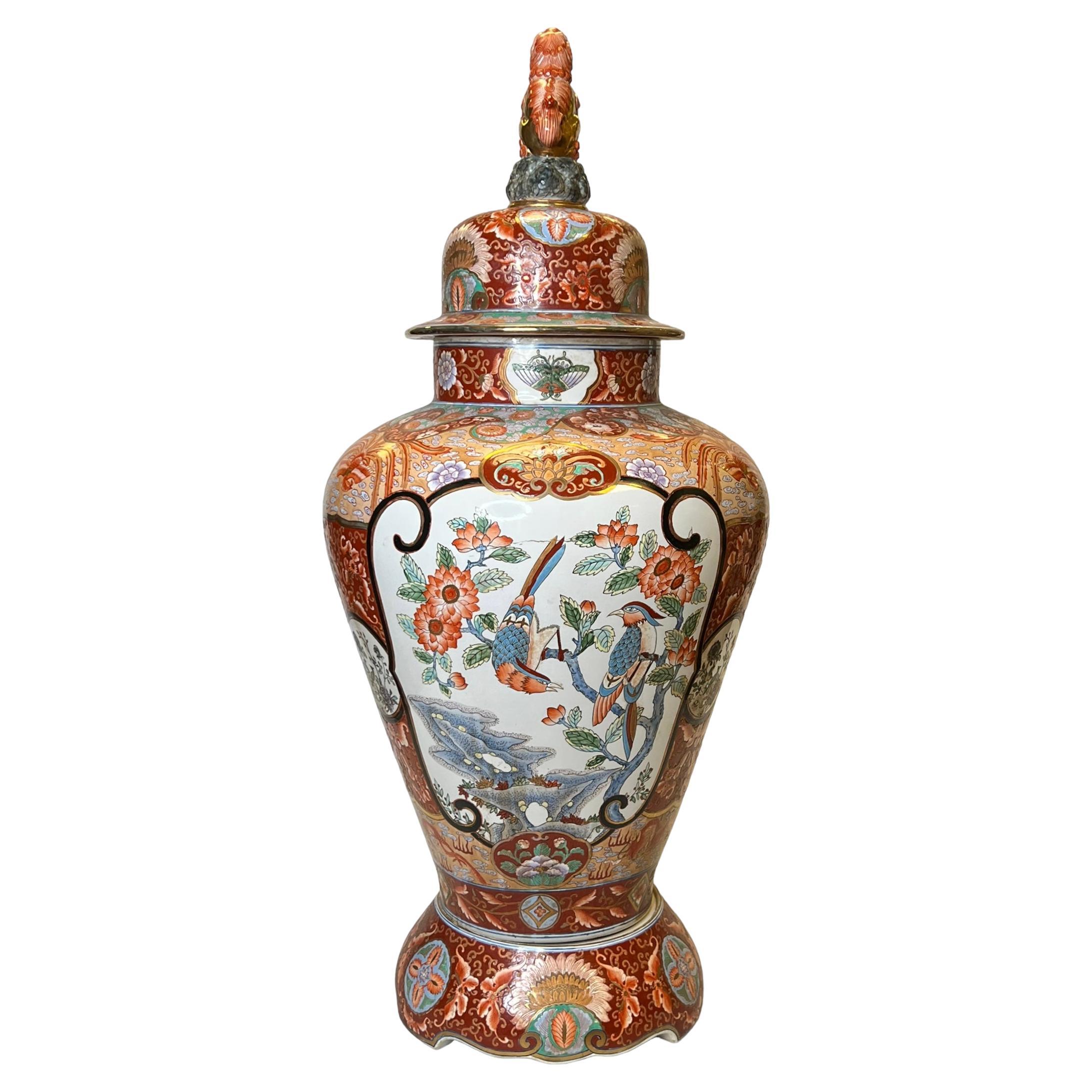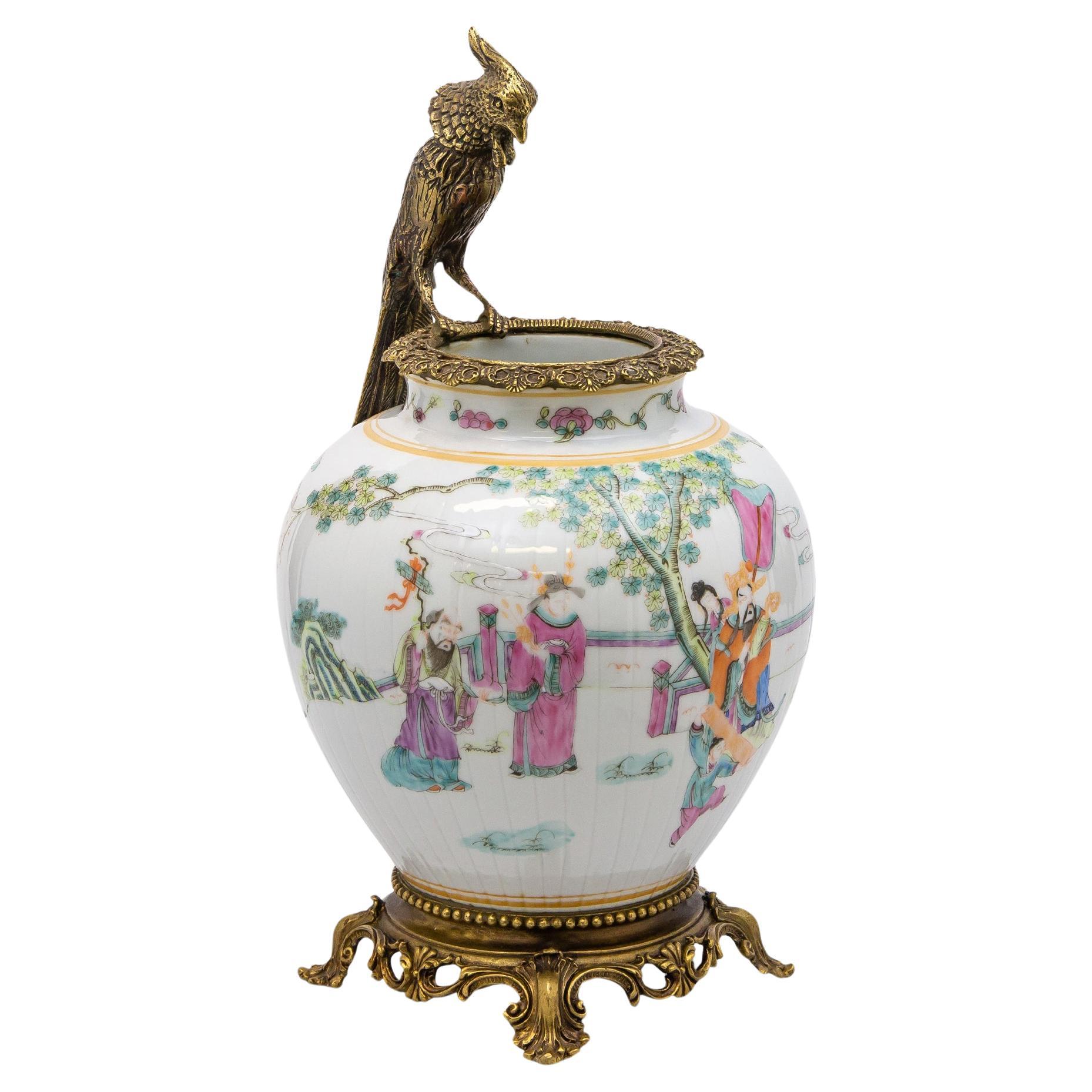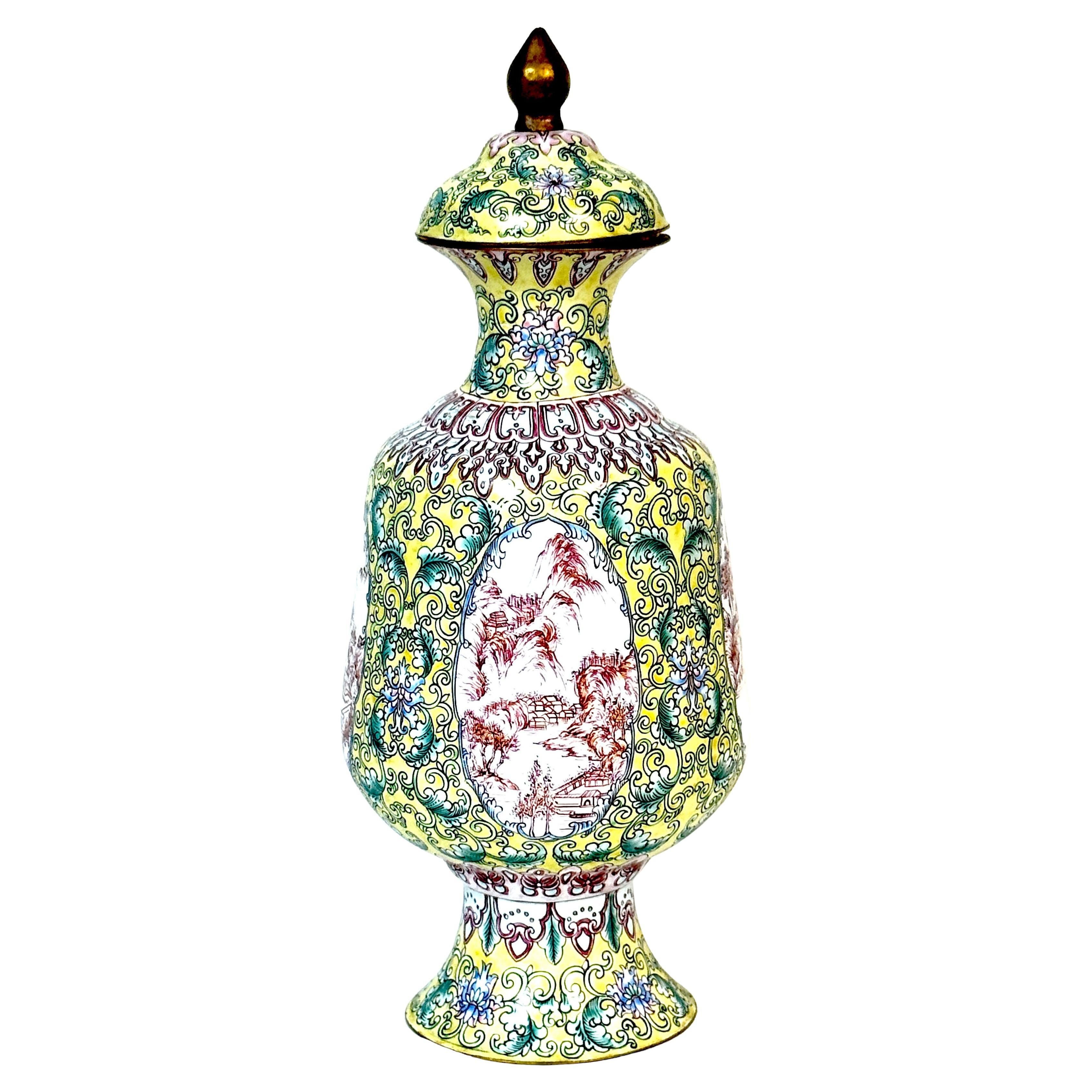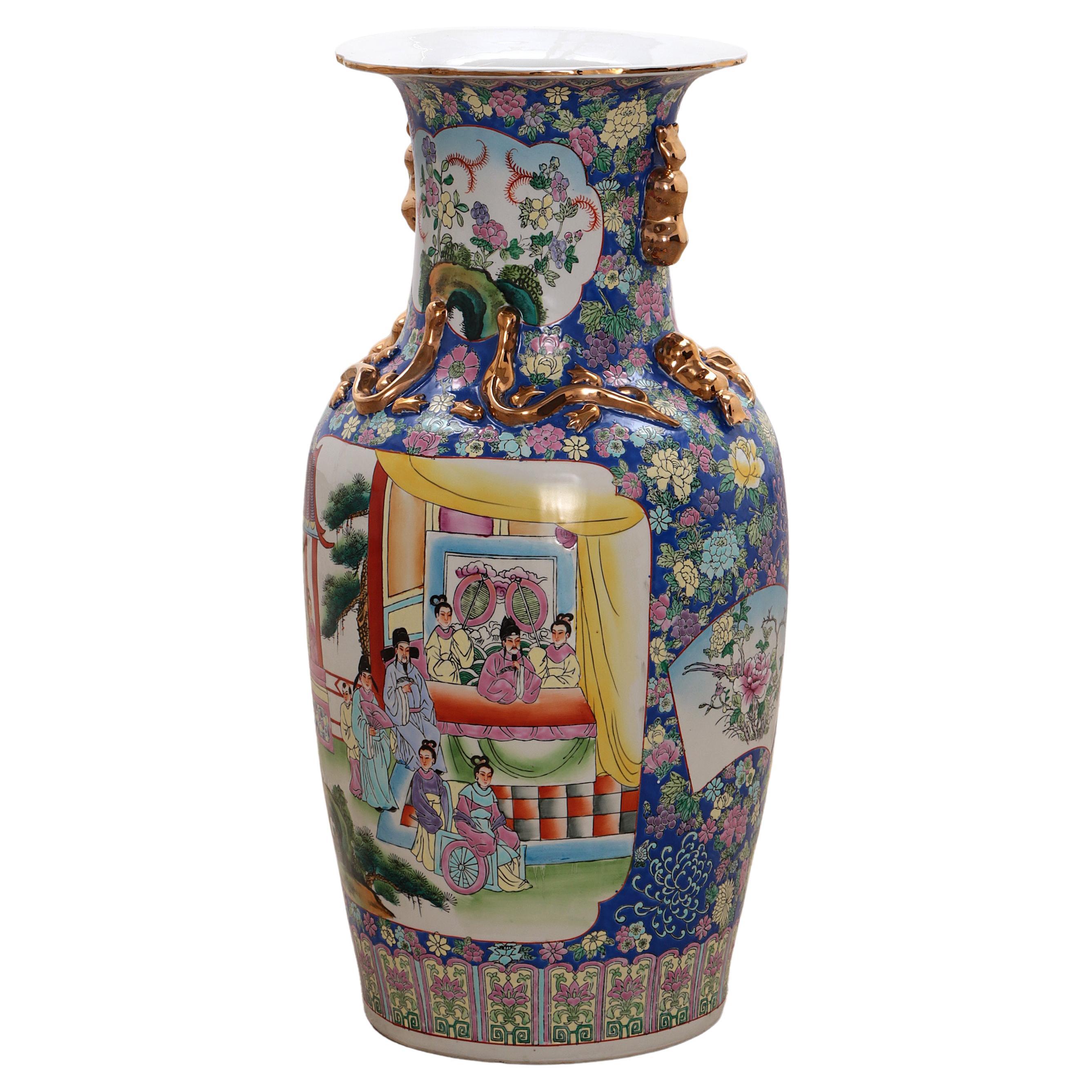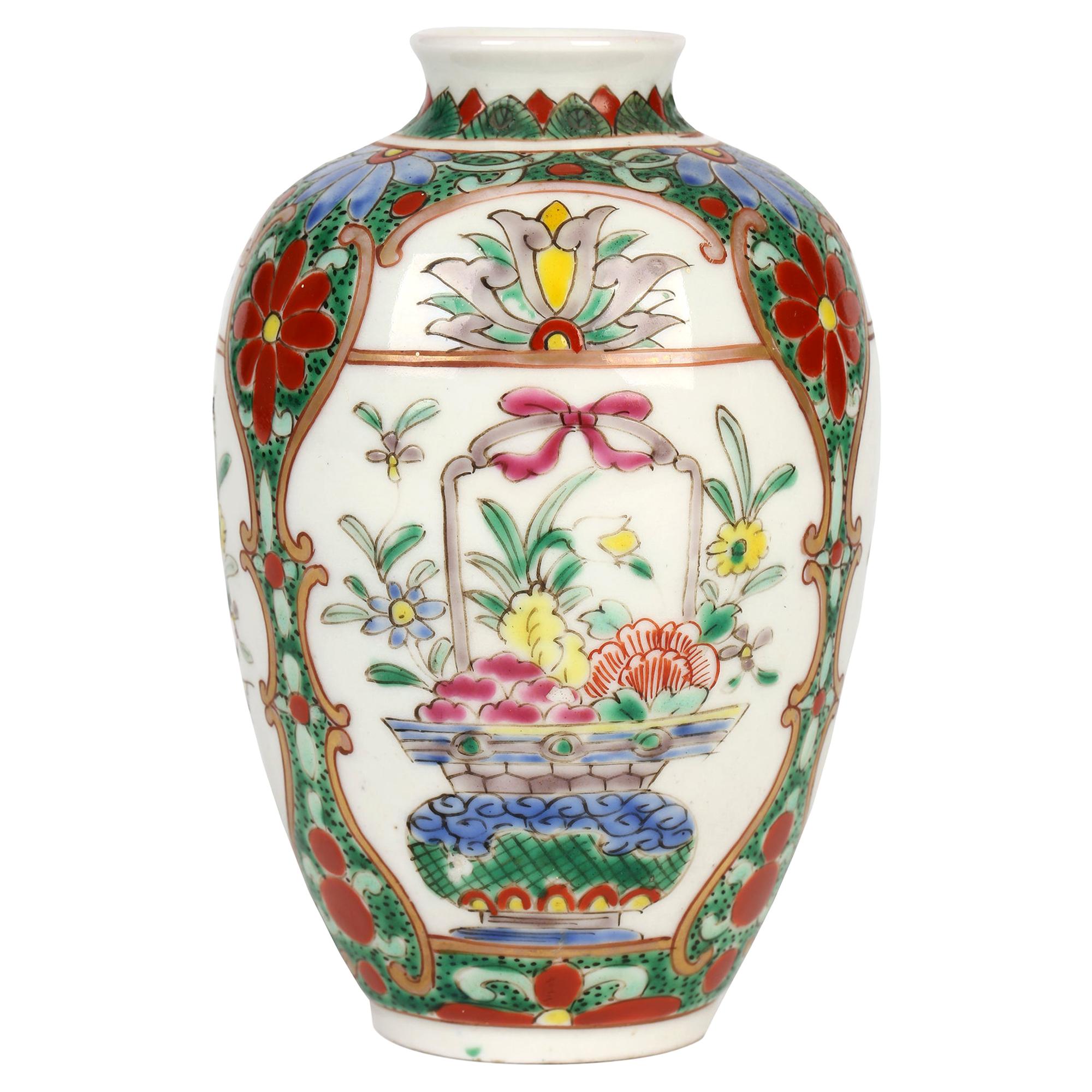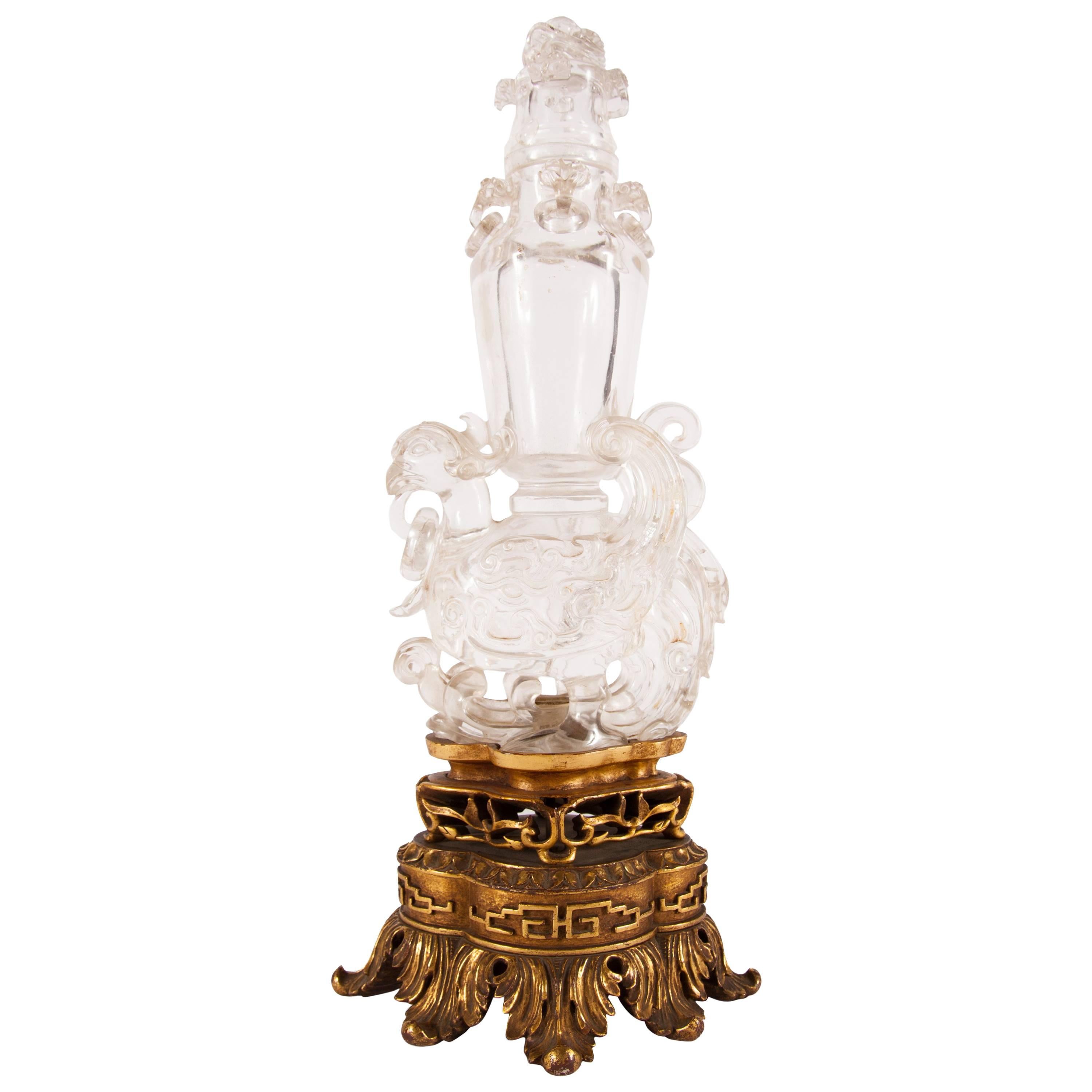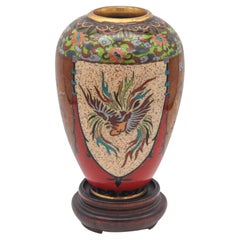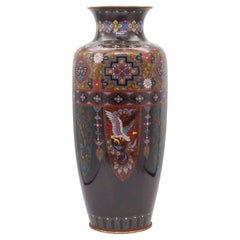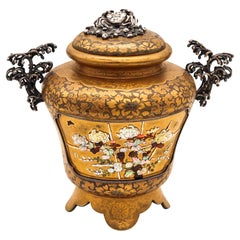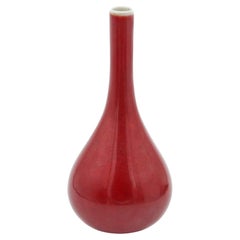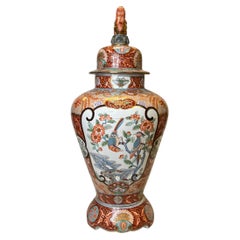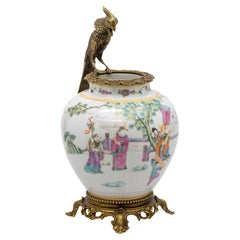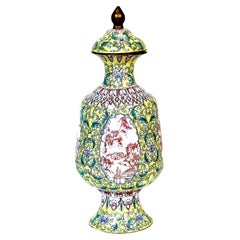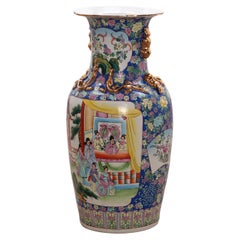Items Similar to China Republic 1912-1960 Inside Paint Carved Rock Crystal Vase Silver & Enamel
Want more images or videos?
Request additional images or videos from the seller
1 of 14
China Republic 1912-1960 Inside Paint Carved Rock Crystal Vase Silver & Enamel
$15,880per set
$19,850per set20% Off
£12,141.11per set
£15,176.38per set20% Off
€13,984.10per set
€17,480.13per set20% Off
CA$22,252.75per set
CA$27,815.94per set20% Off
A$24,843.10per set
A$31,053.88per set20% Off
CHF 13,017.41per set
CHF 16,271.76per set20% Off
MX$304,103.95per set
MX$380,129.93per set20% Off
NOK 165,321.26per set
NOK 206,651.57per set20% Off
SEK 155,876.96per set
SEK 194,846.19per set20% Off
DKK 104,364.78per set
DKK 130,455.98per set20% Off
About the Item
An impressive China inside-painted vase in rock crystal.
Beautiful and one-of-a-kind art-piece. created in China during the first years of the China-republic, circa 1912-1949. This cushion shaped vase with a lid, has been carefully carved, with elaborated details from four-pieces of natural translucent rock crystal and embellished, with inside-painted scenes of the Chinese Imperial court, probably from the Ming dynasty.
The images are divided into four-panels. The main ones depicts, the Chinese Emperor enthroned, with courtesans around and the standing figure of the Empress surrounded by servants. The secondary two small side panels depicts, two groups of courts ladies.
The piece is embellished in the outside, with intricate filigree mountings crafted of gilded .800/,999 sterling silver. The sterling mounts pieces are decorated, with applications of color enamels and small beads of natural blue turquoises.
In the Empress panel, on top at left, are a poem inscribed in Chinese characters (need to be translated) in black ink and the maker's signature in red ink,
The top lid is decorated with the same technique, depicting two painted paradise birds and one bead of 12 mm carved from translucent reddish agate.
This piece have an overall measures of 175 mm by 125 mm by 250 mm (6.90 x 4.95 x 9.83 Inches).
Inner-painting, is also known as inner drawing or inside painted, is a very difficult Chinese art form. It involves glass bottles which have pictures and often calligraphy painted on the inside surface of the glass. The bottles and vases are produced by manipulating a specialized paint brush through the neck of the bottle.
Inside-painted bottles are associated with Chinese snuff bottles. The earliest inside painted bottles are thought to have been made in the period between 1820 and 1830 as, by then, the beauty of a snuff bottle was probably more important than utilitarian considerations -and considering this- few would have been used for holding snuff.
To paint the inside of the bottle, the artist must paint backwards. Concentration is crucial to make precise strokes. A skilled artist may complete a simple bottle in a week while something special may take a month or more. The best craftsmen may produce only a few bottles in a year.
Note: Painting on the inside of a miniature container is challenging, especially when the motifs can be as intricate as landscapes, insects, and human figures. The technique had been guarded as a secret of the industry and not disclosed to the public until the end of the last century.
Literature: The amazing art of "inside painting", Chen Huizhi, Shanghai Daily, August 15, 2016.
Very rare and impressive vase in great antique condition, with just one small sphere missing.
INVENTORY REF: D0000XINM/.1111.
- Dimensions:Height: 9.83 in (24.97 cm)Width: 4.95 in (12.58 cm)Depth: 6.9 in (17.53 cm)
- Sold As:Set of 2
- Style:Chinese Export (Of the Period)
- Materials and Techniques:
- Place of Origin:
- Period:
- Date of Manufacture:circa 1912-1945
- Condition:Wear consistent with age and use. Very rare and impressive vase in great antique condition, with just one small sphere missing.
- Seller Location:Miami, FL
- Reference Number:Seller: D0000XINM/.11111stDibs: LU8303233475302
About the Seller
5.0
Gold Seller
Premium sellers maintaining a 4.3+ rating and 24-hour response times
1stDibs seller since 2023
206 sales on 1stDibs
Typical response time: 3 hours
- ShippingRetrieving quote...Shipping from: Miami, FL
- Return Policy
Authenticity Guarantee
In the unlikely event there’s an issue with an item’s authenticity, contact us within 1 year for a full refund. DetailsMoney-Back Guarantee
If your item is not as described, is damaged in transit, or does not arrive, contact us within 7 days for a full refund. Details24-Hour Cancellation
You have a 24-hour grace period in which to reconsider your purchase, with no questions asked.Vetted Professional Sellers
Our world-class sellers must adhere to strict standards for service and quality, maintaining the integrity of our listings.Price-Match Guarantee
If you find that a seller listed the same item for a lower price elsewhere, we’ll match it.Trusted Global Delivery
Our best-in-class carrier network provides specialized shipping options worldwide, including custom delivery.More From This Seller
View AllJapan 1890 Meiji Period Decorative Vase In Cloisonné Enamel With Wood Base
Located in Miami, FL
Japanese vase from the Meiji Period (1868-1912).
Beautiful antique decorative vase, created in Japan during the Meiji period (1868-1912), circa 1890s. It was carefully crafted in so...
Category
Antique 1890s Japanese Meiji Metalwork
Materials
Bronze, Enamel
$558 Sale Price / set
20% Off
JAPAN 1890-1900 Meiji Period Decorative Six-sided Vase In Cloisonné Enamel
Located in Miami, FL
Japanese vase from the Meiji Period (1868-1912).
This is a beautiful antique decorative vase created in the imperial Japan during the Meiji period (1868-1912), circa 1890s. It was c...
Category
Antique 1890s Japanese Meiji Metalwork
Materials
Gold, Bronze, Enamel
Japan 1890 Meiji Shibayama Round Urn in Gilded Wood and Sterling Silver
Located in Miami, FL
Shibayama urm from the Japan meiji (1858-1912) period.
Gorgeous piece of art, created in the imperial Japan during the Meiji period, circa 1890. This is a little urn with a lid crafted in gilded wood, shibayama panels and sterling silver. Composed by a four footed round vase with two sterling silver handles in the shape of trees and the lid on top accented with the figure of a crab in sterling silver. The gilded wood is decorated with flowers, sea patterns and the imperial flower...
Category
Antique 1890s Japanese Meiji Antiquities
Materials
Multi-gemstone, Gold, Silver, Sterling Silver, Gold Leaf
$5,588 Sale Price / set
20% Off
QING DYNASTY 19th Century Antique Chinese Porcelain Red Glazed Fluted Vase
Located in Miami, FL
Antique Qing dynasty porcelain vase with red glaze.
This is an antique 19th-century Chinese Porcelain vase created during the Qing Dynasty circa 1850. It has been crafted during the...
Category
Antique 1850s Chinese Qing Ceramics
Materials
Porcelain
Spanish Colonial 1820 Rare Large Display Amphora with Handles in Solid Sterling
Located in Miami, FL
A Spanish Colonial amphora vase with handles.
Gorgeous oversized antique silver piece with baroque and neo-classic patterns. made at the beginning of the 19th century, during the ...
Category
Antique 1820s Mexican Spanish Colonial Vases
Materials
Silver, Sterling Silver
$3,800 Sale Price
20% Off
JULIEN VIARD 1920 Paris Art Deco Frosted Embossed Glass Lidded Vase 18Kt Gilt
By J.L. Viard
Located in Miami, FL
Round lidded jar in frosted glass designed by Julien Viard (1883-1938).
This a very nice decorative lidded jar created in Paris France during the art deco period by Julien Viard, ba...
Category
Vintage 1920s French Art Deco Jars
Materials
Crystal, Gold
$798 Sale Price
20% Off
You May Also Like
Palatial 19th Century Chinese Qianlong Porcelain Vase with Cover and Pedestal
Located in New York, NY
Palatial 19th Century Chinese Porcelain Vase with Cover and Pedestal in the Qianlong style, with lovely floral and bird cartouches on rust red ground. With Qianlong mark on undersid...
Category
Antique Late 19th Century Chinese Chinese Export Ceramics
Materials
Porcelain
Chinese Tongzhi Porcelain Vase Decorated in Polychrome Enamels with Bronze Mount
Located in Brisbane, QLD
This exquisite polychrome Chinese vase has been mounted with bronze mounts and has previously been in two private collections. The vase dates to the reign of Chinese Emperor Tongzhi ...
Category
Antique Mid-19th Century Chinese Ceramics
Materials
Bronze
Chinese Canton Enamel Baluster Vase & Cover with 4 Landscape Reserves, 20th C.
Located in West Palm Beach, FL
Chinese Canton Enamel Baluster Vase and Cover with Four Landscape Reserves, 20th Century
2 Pieces, Vase and Cover
A beautifully enameled Chinese baluster-form vase and cover, dati...
Category
Mid-20th Century Chinese Chinese Export Vases
Materials
Copper
Old Chinese Ceramic Hand Painted Vase
Located in Oirlo, LI
Old Chinese Ceramic Hand Painted Vase,
Antique Chinese ceramic hand-painted vase,
This is an old vase. A Chinese ceramic baluster urn with hand-painte...
Category
Vintage 1980s Chinese Chinese Export Porcelain
Materials
Ceramic
Oriental Possibly Samson Finely Hand Decorated Porcelain Vase
Located in Bishop's Stortford, Hertfordshire
A very finely made oriental styled porcelain vase hand painted with baskets containing flowers dating from the late 19th or early 20th century. The bulbous shaped vase stands on a narrow rounded foot and is hand decorated in coloured enamels with three panels containing a Chinese handled...
Category
Early 20th Century French Chinese Export Vases
Materials
Porcelain
19th Century Chinese Carved Rock Crystal Vase
Located in London, GB
This vase demonstrates some of the best workmanship to have come out of the early 19th century in China. Made from carved rock crystal and set on a later giltwood base, the vase date...
Category
Antique Early 19th Century Chinese Vases
Materials
Rock Crystal
More Ways To Browse
Carved Rock Crystal
Chinese Enamel Blue
Used China And Crystal
Bird On A Rock
Chinese Cushions
Gemstone Painting
Chinese Carved Figures
Rock Sphere
Black Rock Antiques
Emperor And Empress
Silver Enamel Figure
Hand Carved Chinese Figures
Rock Crystal Chinese
Ming Chinese Figures
Miniature Chinese Vases
Chinese Paint Brushes
Filigree Vase
Chinese Insect
